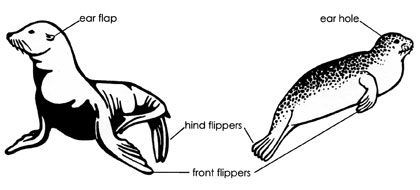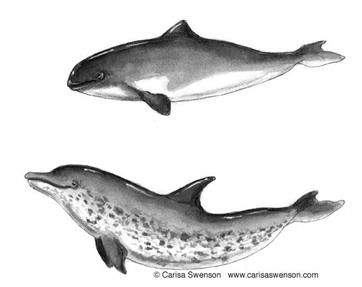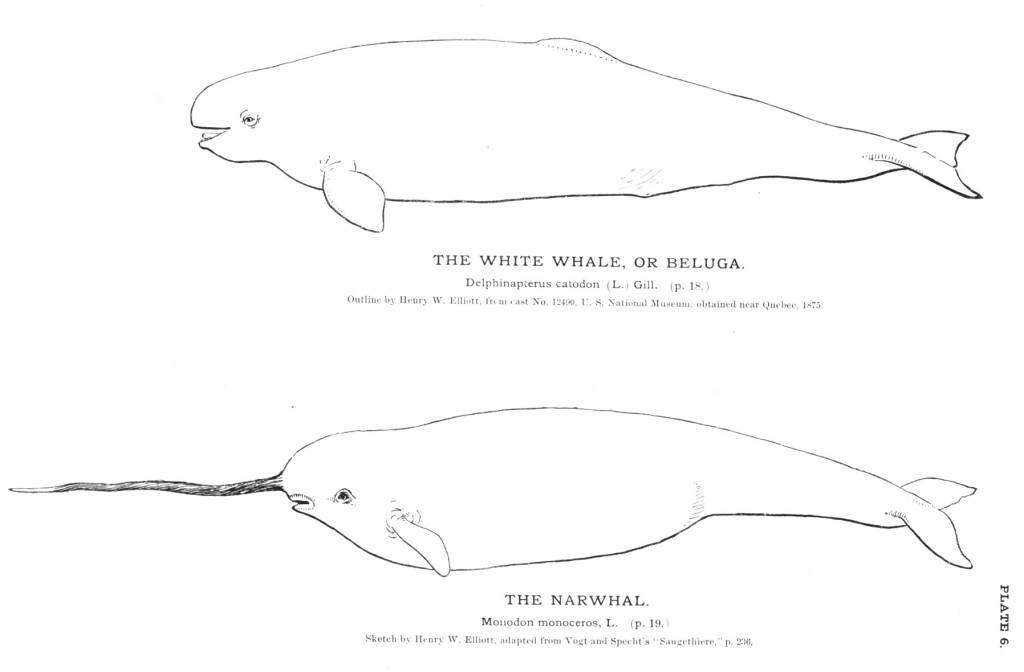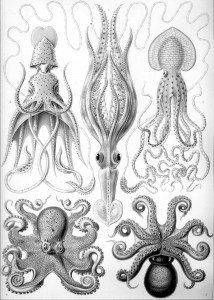About the Comic
Right Now Every week I come up with ideas inspired by friends, manatees and the world around me, and I draw them out with pen and colored pencil. I scan them in and set each week’s comic to publish on Monday, and that’s how it gets to your screen.
The Beginning The first comic is inspired by a video of a manatee nibbling a diver’s hand, the first video I had ever seen of a manatee (http://www.youtube.com/watch?v=GzGSAs3dcTI). The name “Man versus Manatee” was a name that I gave to that single illustration, which became the title of a series of comics as I came up with more and more ideas.
At first, I showed the comics only to my family and closest friends, because I did not yet have a way to share them more efficiently. I hand-drew each illustration (and still do) with colored pencils and fine-tip pens, uploading them as image files with whatever scanner was available.
When I posted the first few comics on Facebook, my friends immediately encouraged me to make more, but also encouraged me to find a way to share them more efficiently. This is when a friend, Erty Seidohl, offered to host my comic in his domain. A combination of his generosity and his own experience with the production of webcomics (http://ertyseidel.com/comics/) got the site on its feet in no time at all. Having little experience with the Internet in general, I am certain that “Man versus Manatee” would not exist today without his help.
The Purpose Each comic takes two or more hours to plan and create, giving me plenty of time to ask myself why I am producing a weekly, manatee-themed webcomic. I recognize that a great number of people who work with the manatee would cite the species’s dire state of near-extinction when asked why they do what they do, but my answer focuses much more heavily on promotion of the mammal, and spotlighting its lovable personality.
Living in southeastern Wisconsin, I have never had the chance to see a manatee in person. My only connection with the sirenians is through pictures, videos, books, and other media. When I see a manatee, I don’t see a suffering animal, but an adorable, round, gluttonous, water-dwelling creature. When I research the manatee, I am overwhelmed by the amount of unfortunate news surrounding it – constant talk of boat collisions, threats to their environment, and the careless actions of humans. This perspective is certainly important to the manatee’s conservation, but where are the positive vibes appropriate for such a sweet animal? What can I do to inspire people to relate to the manatee, to love it and see what I see with every encounter? So I find my comic has a purpose, to focus on the manatee’s relatability, humanity, and its infinite ability to make people smile.
With my comic’s purpose in mind, I have created a small set of rules for myself, to keep my comics positive and focused:
1. Avoid comics that could just as well be told using humans (there must always be a manatee or aquatic element)
2. Avoid portraying humans (this comic belongs to the manatee)
3. No propeller jokes (I made a joke about a propeller joke once, and that was plenty for starting a discourse or getting readers curious)
4. Continue to hand-draw the comic, even as most other webcomics are produced digitally
About the Manatee
(and other creatures)
This page may expand as I compile more information on the manatee and other creatures that appear in my comic.
The Order Sirenia and Its Current State
Steller’s sea cow, Hydrodamalis gigas, is extinct. Humankind managed to wipe out the relict population of possibly 2,000 of these giants in just under 30 years in the late 1700s; twentieth-century technology must be far more efficient. Numbers of dugongs (Dugong dugon) throughout their Indo-Pacific marine range are not endangered in the current sense of the word, but they have diminished in many areas and today are absent in others where once they were known, even abundant. Trichechus inunguis, the Amazonian manatee, has been referred to as the most endangered Sirenian owing to its remote habitat and to relentless human pressures upon the population. The West African manatee, T. senegalensis, is diminishing in numbers, but so little is known about them that definitive statements are impossible at this time. The West Indian manatee, T. manatus, recently has been the subject of intense scrutiny; it should be, with only an estimated 14,000 remaining in its total range. Of these, 1,800 or less of the Florida manatee subspecies (T.m. latirostris) survive within U.S. waters, and those only in coastal waters from Texas through Florida. Without doubt the sea cow is the most endangered of aquatic mammals.
Political and technical conservation efforts currently range from legislation and sanctuaries to propeller guards and flood-control-gate protective equipment. But no measures will accomplish more than will public awareness of the plight of the manatee. Destroying or saving 60 million years of evolution is in our hands.
-Quoted from the epilogue of Introducing the Manatee, a book by Warren Zeiller, 1992
Classification and Ranges of Recent Sirenians
Phylum: Chordata
Class: Mammalia
Superorder: Paenungulata
Order: Sirenia
Family:
Dugongidae–Arctic Sea Cows and Dugongs
Hydrodamalis gigas–Steller’s Sea Cow (Marine; Bering Sea)
Dugong dugon–Dugong (Marine; Red Sea, Bay of Bengal, Malay Archipelago, Molucas to Phillippines, southward to New Guinea and northern Australia)
Trichechidae–Manatees
Trichechus inunguis–Amazonian manatee (Freshwater; Orinoco and Amaon river drainages of northern South America)
Trichechus senegalensis–West African manatee (Euryhaline; coastal and river drainages from Senegal River south to Cuanaga River, including Lade Chad drainage)
Trichechus manatus–West Indian manatee
Trichechus manatus latirostris–Florida manatee (Euryhaline; Jacksonville, south around peninsular Florida, Florida Keys, west through Texas)
Trichechus manatus manatus–Antillean manatee (Euryhaline; coastal Central and South America to Brazil, West Indies, Puerto Rico)
-Information derived from Introducing the Manatee, Zeillor, 1992
Anatomy of a Manatee
Some Helpful Visual Comparisons
A Threat of Invisibility One of the manatee’s closest relatives is the elephant; we would be heartbroken if we were responsible for bringing about the elephant’s extinction, but the manatee seems invisible in comparison. Unlike the elephant, the manatee cannot be found in a box of animal crackers or in a toddler’s animal vocabulary. So I find it is my responsibility as the artist and creator of “Man versus Manatee” to increase the visibility and relatability of the sirenians.
Sharing Please enjoy and share my webcomic (and with it, the manatee), because that is all that I ask of you. When you share my comic, it is less important that you include my name, and more important that you include the name of the comic and its address (http://manvsmanatee.com). Every time you share “Man versus Manatee,” I’m sure the manatee is just as thankful as I am. Thank you for reading!
Rachel Jo Arnow










Excellent! Look forward to the expansion, and love the cartoons. All the best from Rolling Harbour
Wondering if you ever plan on making a book of the Man vs Manatee comics. It’d be great and excellent and everything in-between!
I may make a book of my comic some time in the future, but how about t-shirts for starters?
I came to your site looking for t-shirts!
They’re in the making! :]
I hope so! I could use a good cute Man vs Manatee t-shirt!!
In the making…. But can you ship to Canada? I have a lot of friends who would buy one.
Yay tee shirts i have to get 1…. or 2 :)!!!! Also i live in Washington state and I vacationed to Florida this summer and on a boat tour i saw a mother manatee calf. It was awesome. Thanks for putting the happiness into my mondays! 😉
oh also do you happen to know exactly where in your website we can buy the t-shirts? because i am getting 1 no matter what!! 😀 So anyway is it going to be like a tab on the home page or something. Sorry if i am being impatient i just love your work so much!
I’m impatient for t-shirts, too, but I’m a college student who hasn’t had a whole lot of time to focus on the comic lately. I’m SO eager to get moving on t-shirts, and I think I will have them under a tab of their own. Believe me, you’re not the only one who can’t wait to wear cute manatees. 🙂
Yes plz!!!!
I need manatees!!!1!
Has college finished by now? unless that college is more than 4 years
🙂 how wonderful love the new comic!
I just wanted to thank you for these comics. I love manatees so much and these never fail to bring a smile to my face.
I just love your comic!!! I discovered it two days ago, and have been reading it in all my spare time. When are t-shirts coming out????
Hey, Rachel, can you try to get some t-shirts in Canada? I NEED ONE!!! You know, along with my other manatee t-shirt but that is beside the point! Can you put that strip with the manatee and Posiden on one?
also, HOW DO U MAKE AN ID PICTURE ON THIS SITE?!!!!!!!!!!!!!!!!??????????????????????
When making a comment, you will have to enter an email. Beside the email box there is a link that reads “get a gravatar”. Click it, and follow the website instructions. You will need to wait five minutes after making an account for the picture to appear on “man vs manatees” comments.
I love love love Man vs Manatee with ALL my heart and hope that it makes newspapers some day! It deserves a whole book of strips from the archives! Rachel, you NEED to make a book! I would run to my local bookstore with all my savings (being in school I don’t have that much $$) if a book with Man vs Manatee strips came out in Canada! You have a big heart, a strong mind and you use it well! Keep it up!
-Kitty Chan
P.S: I know i really don’t have to put my name at the end but its a long comment so why not make it like a letter or an email?
I love manatees!!
When will your shirts be in Canada?! I have been waiting FOREVER!!!
Still waiting…
And waiting…..
Hey, Rachel! You made a drawing of a manatee family a while ago, and I was wondering if I have your permission to have it made into a vinyl sticker for the back of my car? I LOVE manatees and think the style of your illustrations bring forth their kind gentle nature. I am the chick who suggested Wonder Womanatee to you, as I use “her” as a reminder to myself to not only be kinder and stand up for what is right, but to love my rather manatee shaped body. I have a guy on etsy in mind to make the stickers. If you let me go through with this, it might be a boon to you as well so you can then sell the car stickers on here. I know a lot of us LOVE your art (I was one of the lucky ones to “score” a shirt when they were sold). Once I get the car sticker, the guy could simply make you up more of them to re-sell. RSVP here or to my email which I gave you privately and let me know what you think & if I can use the image. 🙂 Thanks.
What a sea squirt
Hi Rachel. My daughter I love your work. What is the latest on your permission to make T-shirts or bumper stickers or to buy them from you.
All the best. -Howard
T-shirts and stickers coming soon! I will be sure to announce them as soon as I put them up on my online store.
Just want to say I was obsessed with manatees in elementary school and found this gem in around the 4th grade. I even had comics as my gmail background (still do! Wonder Womanatee) and I’m so happy these are still being made. Now I’m in high school and would buy a book of these strips in an instant.
Thank you so much for letting me know that you appreciate my work. It’s hard to believe that I’ve been at it so long!
High school is rough. I’m happy to lend a manatee wherever I can.
I see that your artwork is all copyrighted. Are people allowed to copy your cartoons and post them on social media, Facebook?
Please, share my comic! I include a copyright because I believe that it is a good reminder that the comic belongs to someone.
I ask that you share Man versus Manatee with either the comic’s name attached to it, or (even better) a hyperlink. And as a general rule, don’t create a situation in which you financially profit from someone else’s work. That’s all the copyright means.
Share to your heart’s content! I create my comic to spread awareness of and appreciation for the manatee. I promise you’re helping.
Hi! I have been in love with Manatees for years now! I even cried when I got to see one popping its head out of the water in Florida. I have followed your comic for years but through Pinterest and other sights, not realizing there was an actual webpage. I just wanted to tell you how much I love your work, and how you show the bubbly and amazing personalities of our big water friend!
In the video of the manatee and diver linked above (http://www.youtube.com/watch?v=GzGSAs3dcTI) the sirenian reminds me of Bender in Futurama.
Is the only external difference between male and female manatees the relative placement of the genitals in relation to the anus and umbilicus?
I love these guys. Thank you Jo.
Females also have teats under their flippers (very subtle)!
Love your manatee comics as manatees are my favorite animal! Thank you for sharing your passion and creativity.
Niece sent me 8/23/22. Manatee giving gift box to clam who reaches out with clam part to give kiss to manatee. Manatee has word written on it *s—-k*. Did not know of word so looked up on internet. Did you know the meaning ? Or else what word is being used for now? in slang? Manatee loving niece would not know word.
In the comic, the word is used as an onomatopoeia. Its main definition, according to the top result via Google (Wiktionary) is “The sound of something sliding or slipping over or into something wet, while getting some traction.” If a definition lists a secondary meaning, and specifies that it is “(rare, slang, vulgar),” that means that that definition can be ignored unless you have reason to believe that the word is being used as slang or in a vulgar way.
Do you have a print of Miraculous Manatees? I would love to get one.
Can you make a print of Manamorphs?
Can you do a comic strip about each manatee? Based on all of the comics I read, each manatee is unique and wonderful in their own way. I love Millie and her busy savviness and Marcus desire to be a mermaid. I want to know more about them.
Are Macus and Manny best friends? Does Millie have siblings?
Hi Rachel,
Have you had a chance to see a manatee irl yet?
Haven’t seen one yet up close!
I need to spend more time by the water!